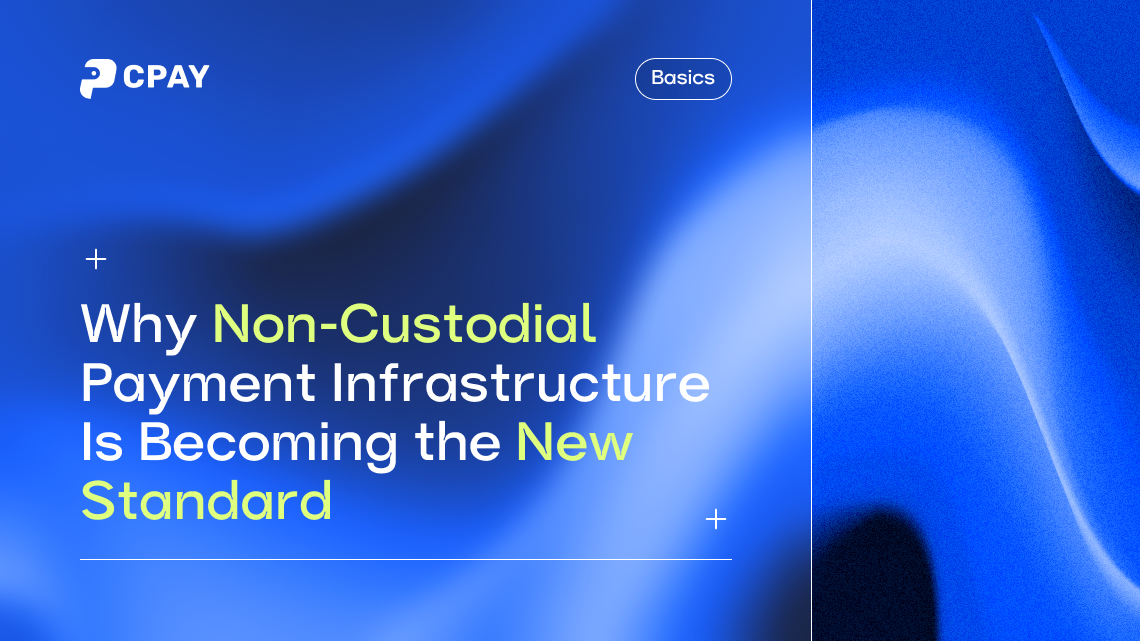As crypto payments mature, businesses are rethinking how they process and protect digital assets. For years, the market was dominated by traditional custodial gateways — centralized platforms that hold users’ funds on their behalf.
But in 2025, a new model is taking over: non-custodial crypto payment gateways that give merchants full control over their money.
The shift is not only technical — it’s philosophical. It redefines trust, transparency, and ownership in digital commerce.
1. How Traditional Crypto Payment Gateways Work
Traditional (custodial) gateways act as intermediaries between users and merchants.
When a customer pays in crypto, the gateway receives and stores those funds, performs internal reconciliation, converts them to fiat or stablecoins, and later sends payouts to the merchant.
This model offers certain benefits — ready-made compliance, simplified UX, and integration with fiat banking. However, it comes at a cost:
- Loss of control: Merchants don’t own or directly access the received funds.
- Security exposure: Hacks or insolvency of the gateway can lead to lost balances.
- Delayed settlements: Transfers depend on internal processes and banking partners.
- Regulatory friction: Custodial operations require complex licensing and ongoing KYC/AML supervision.
Essentially, merchants trust a middleman to manage their crypto — which contradicts the core principle of blockchain: self-custody.
2. The Rise of Non-Custodial Payment Infrastructure
Non-custodial gateways remove that layer of dependence.
They are built on smart-contract or wallet-based systems where transactions go directly from payer to merchant, without any intermediary holding custody.
Funds never leave the blockchain.
Merchants receive payments instantly, transparently, and verifiably — while retaining 100% control of their assets.
This architecture eliminates the two biggest weaknesses of traditional models — counterparty risk and settlement delay — while still providing the same features businesses need:
API integrations, invoicing, multi-chain support, and conversion tools.
In essence, non-custodial gateways make crypto payments trustless by design, not just by marketing.
3. Why the Market Is Moving Toward Non-Custodial Systems
Global regulation and user expectations are pushing the industry toward greater transparency.
As stablecoins, DeFi, and Web3 businesses scale, more companies demand infrastructure that aligns with the ownership culture of crypto.
Key drivers of the shift include:
- Regulatory clarity: Authorities increasingly distinguish between custodial and non-custodial service providers.
- Operational resilience: Without third-party custody, there’s no single point of failure.
- Instant cross-border commerce: Settlements happen on-chain within minutes, without intermediaries or fiat rails.
By 2025, most forward-thinking fintechs and Web3 platforms are integrating non-custodial systems — not only to minimize risk but to meet the expectations of a blockchain-native audience.
4. CPAY’s Non-Custodial Model
At CPAY, we believe that payments should be transparent, verifiable, and fully under user control.
That’s why our infrastructure is entirely non-custodial:
- CPAY never touches or stores client funds.
- All transactions are processed directly on-chain.
- Merchants can track every transfer in real time.
This architecture ensures zero custody risk, instant crypto settlements, and complete regulatory transparency — a combination that makes CPAY the infrastructure layer of choice for modern businesses working with digital assets.
Whether you’re building an exchange, iGaming platform, or fintech product, CPAY provides the technology to accept and manage crypto payments without ever giving up control of your funds.
Conclusion
The future of crypto payments is clear.
As the market matures and trust becomes programmable, non-custodial systems are emerging as the global standard.
They offer what custodial gateways cannot: speed, safety, and sovereignty — the core principles of decentralized finance.
For businesses that want to stay ahead, the question is no longer “should we switch?” — it’s “how fast can we integrate?”







